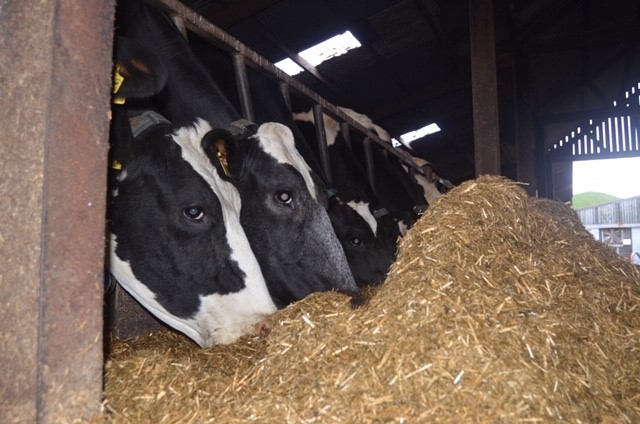With forage stocks running low, taking action to reduce heating and waste will helps stocks go further, according to Alice Hibbert, product manager – Feed Additives at Trouw Nutrition GB.
“Heating of silage reduces the stocks available to feed, which will be a big issue in the final few weeks of winter feeding as clamps run empty,” she comments. “Heating silage can have a negative impact on performance, contaminating the rest of the diet and pushing up costs per litre.”
She explains that heating leads to losses in dry matter and a decline in feed value as energy is used up. For a typical herd feeding 22kg dry matter of a TMR per cow per day, a 5% reduction in dry matter would mean you are losing 1.1kgDM per cow per day. Additionally, there is an increased risk of feed rejections.
“If half the lost dry matter is from forage, a 200 cow herd would be wasting 100kg forage dry matter per day, which at an average of 30% dry matter equates to 330kg/day of fresh silage or 10 tonnes per month. This is forage few farmers can afford to lose this year.”
As soon as silage is exposed to air it begins to ferment because oxygen, which has been excluded in the clamp, is reintroduced. This allows the moulds and yeast present on the silage to multiply, rapidly using up energy and protein in the forage and other components in the ration.
Miss Hibbert says this could be a particular problem this year with more, higher dry matter silages which tend to be less well compacted in the clamp and more prone to spoilage.
“If TMR diets are allowed to heat up you end up feeding less of a lower quality feed, both of which will affect performance. In addition, feeds that have been subject to proliferation of yeasts develop an odour which reduces palatability and depresses intakes.
To reduce the risk of contamination, she advises clearing troughs out daily, removing any refusals which are likely to be the most contaminated material from the previous day and which will continue to deteriorate and contaminate fresh material put on top of it.
“In the clamp, in addition to the absence of oxygen it is the low pH that helps suppress the activity of yeasts. When you mix a TMR you can’t exclude oxygen, but you can influence pH.”
She says adding a blend of buffered organic acids during the mixing of the TMR reduces the activity of yeasts and reduces the extent of heating improving palatability of the ration. In trials, adding acids reduced the yeast population on the TMR by 40% and intakes of treated TMR were 6.5% higher that untreated diets.
“Preventing TMRs heating up will help retain full nutritional value and helps cows milk to their potential,” Miss Hibbert suggests.


